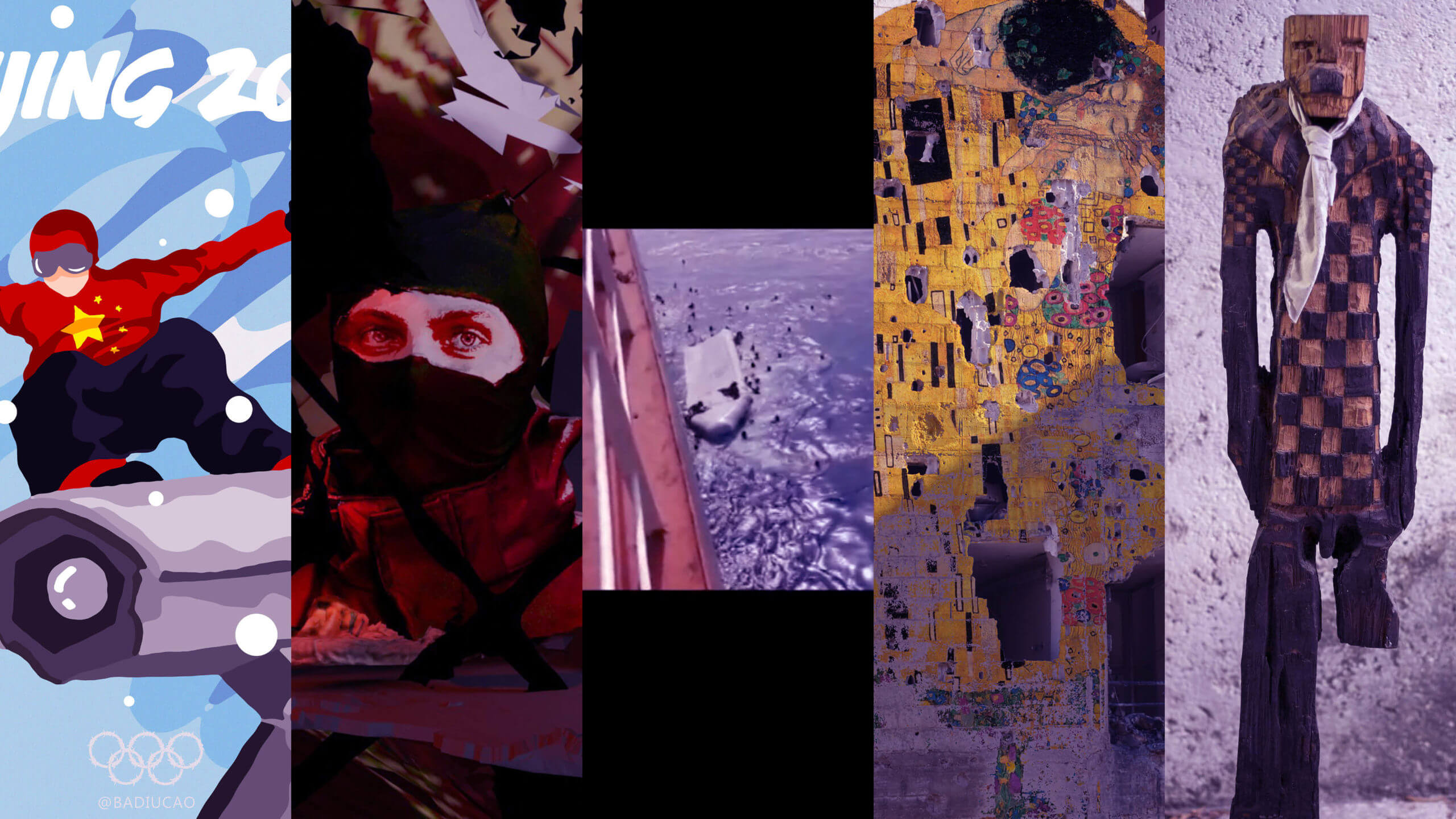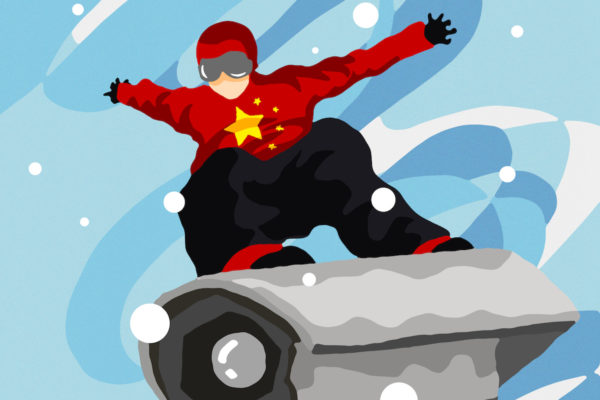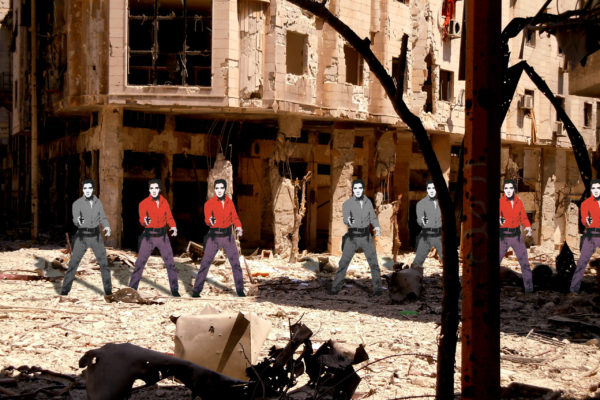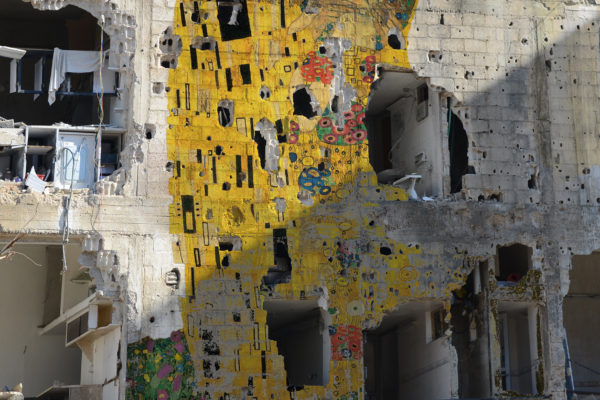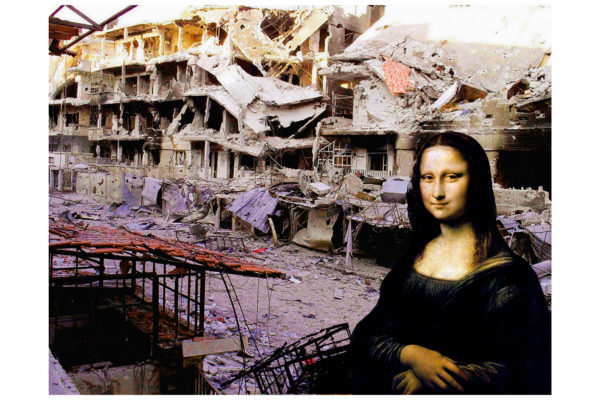Art in Protest Residency: Transmuting Borders
The Art in Protest Artist Residency, launched in 2021 in collaboration with the Gray Area Foundation for the Arts, allows for artists-in-residence to develop projects that use art and technology to create social and civic impact. Transmuting Borders is a digital installation featuring works from resident artists: Sudanese political cartoonist Khalid Albaih, Syrian contemporary artist Tammam Azzam, exiled Chinese dissident artist Badiucao, and Belarusian illustrator Lilia Kvatsabaya. The artworks explore themes of protest in the face of the global ill that is authoritarianism, and the refugee crisis it perpetuates. Transmuting Borders leverages emerging technologies like immersive media collaged from digital archival footage, 3D body scans, and virtual reality to express the hopes and sorrows of those displaced by violence, conflict, and war.
BEIJING 2022 COLLECTION
By Badiucao
The first NFT project from Chinese dissident artist Badiucao, the Beijing 2022 Collection, includes five works of art depicting: the Chinese government’s oppression of the Tibetan people, the Uyghur genocide, the dismantling of democracy in Hong Kong, the regime’s omnipresent surveillance systems, and the regime’s lack of transparency surrounding the COVID-19 pandemic. Each of the five works was minted as 2022 editions, and collectors had the opportunity to write their own message of opposition to China’s authoritarian regime onto the blockchain as part of the minting process, preserving it as a public decentralized record of protest.
Learn more at: beijing2022.art
NEGLECTION
By Lilia Kvatsabaya
Neglection is the response of a Belarusian artist who immigrated to the United States to election fraud and police violence in Belarus. Using her own experience of participating in 2020 peaceful protests and solidarity chains in Minsk, Lilia Kvatsabaya created compositions consisting of fragmented objects that are combined with her self-portraits.
The Neglection project consists of scenes filled with the artist’s memories of the events of 2020 in Belarus, as well as her sensation of the difficulties faced by an entire nation in the struggle for freedom. Organic and inorganic forms, built together, layer by layer, immerse the viewer in an environment of horror and danger. Five scenes of the project are accompanied by music created by the Belarusian musician Morbid Kvlt, and allow the viewer to plunge into the atmosphere of pulsating anxiety.
Each scene gives the viewer an opportunity to experience life and the dictatorial context under which people live in Belarus.
See Neglection in 3D at the Gray Area Showcase: bit.ly/neglection2022

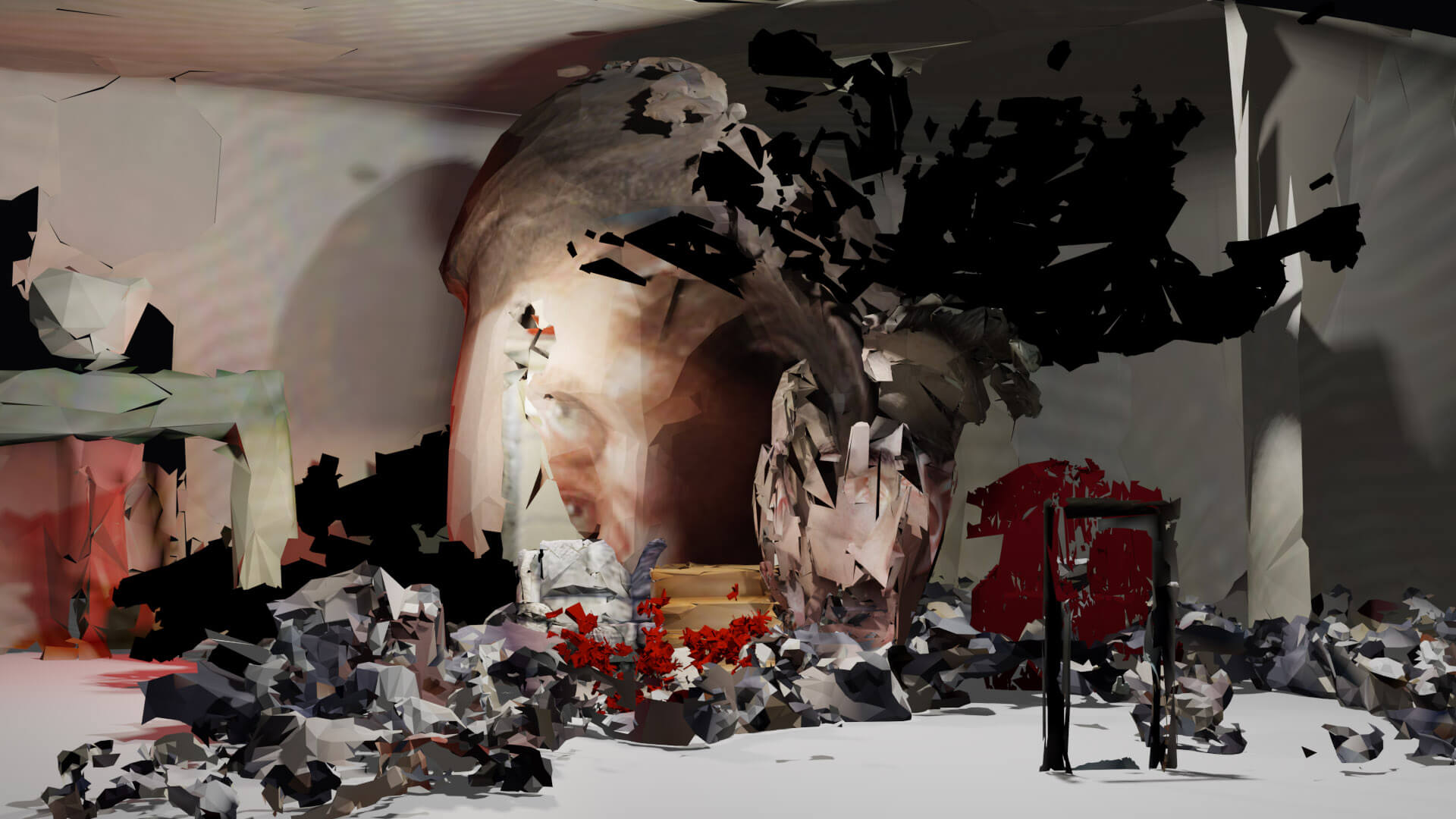
BAHAR
By Khalid Albaih
Every minute, eight people are forced to flee war, persecution, or terror. In 2022 alone, more than 2,500 people have died trying to cross the Mediterranean in rubber dinghies and rusting fishing boats, according to a report by the United Nations Refugee Agency.
In this multimedia piece by Khalid Albaih, you will live a few moments with these refugees at sea.
All footage in the three-channel video work was primarily shot by refugees themselves or rescuers at sea, on the way to Europe from Libya, Egypt, or Turkey, and uploaded to the Internet. The videos were edited by Milton Guillén B, accompanied with music composed by Mohamed Araki.

SYRIAN MUSEUM
By Tammam Azzam
Tammam Azzam made headlines worldwide when his work Freedom Graffiti went viral on social media. He used one of the most iconic kisses in art — Gustav Klimt’s The Kiss — to highlight his native Syria’s suffering, superimposing this powerful image of love over the walls of a bullet-ridden building in Damascus.
The work was part of a larger collection, Syrian Museum, in which Azzam collaged appropriated masterpieces from Western art history into photographic scenes of devastation across Syria. The series embeds masterworks from Matisse, Warhol, da Vinci, and others into imagery depicting the catastrophic collapse of the Syrian built environment. Azzam’s work highlights the destruction of Syria’s cultural heritage by contrasting the creative capacity of humanity with the damage it is also capable of inflicting.
In Honor of Luis Manuel Otero Alcántara
The 2022 Oslo Freedom Forum presents Los Héroes No Pesan for the first time outside Cuba.

Los héroes no pesan (“Heroes are no burden”) is a tribute to Cuban veterans whose grievances were left ignored by the Castro regime after its military intervention in the Angolan Civil War had ended. Cuban intervention in Angola lasted from 1975 to 1991, and it is estimated that up to 400,000 Cuban troops were deployed in support of the communist-aligned militias in the country. The series represents the war-wounded — not just those missing arms and legs, but those who were psychologically mutilated by the trauma of war, and neglected by their country upon their return.
“Everything is useful until proven otherwise. Even the most distressed piece of wood has spirituality, and that spirituality can be used.”
– Luis Manuel Otero Alcántara
Luis Manuel Otero Alcántara is a performance artist and human rights defender from Cuba, known for his public performances that openly criticize the state of censorship and repression by the Cuban regime. He is a co-founder of the Museum of Dissidence, an online website and public art project celebrating dissent, for which he won the 2018 Index on Censorship Freedom of Expression Award. He is also a founding member and leader of the San Isidro Movement, a group of artists and activists who promote freedom of expression and cultural rights in Cuba. For years, he was the subject of constant harassment and arbitrary detentions by the Cuban state security apparatus due to his activism.
Shortly after he started his artist residency with HRF, the regime arrested Luis Manuel in July 2021, as he was on his way to the historic pro-democracy protests in the island. Today, he remains behind bars.
